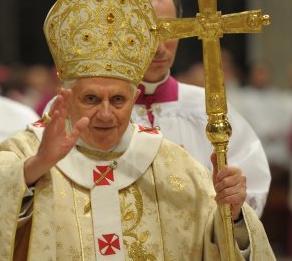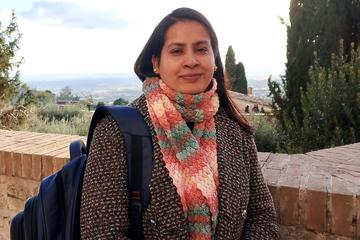
By Filipe Domingues
Emil Anton, a Finnish scholar and Lay Centre alumnus, offered comment on the pontificate of Benedict XVI, deceased Dec. 31, 2022, from the perspective of interreligious dialogue. His dissertation for his doctorate in theology at the University of Helsinki focused on the work of the late pope. The title of his research, published in 2019, is “Ratzinger and the Religions: Studies on Pope Benedict XVI and Interreligious Dialogue.”
“Benedict’s main point was that faith and reason go together and that religion should never be used blindly to justify irrational acts of violence,” Dr. Anton said.
Read the full interview below.
LC: How would you describe Benedict’s contribution to interreligious dialogue?
EA: When I began working on my doctoral dissertation on Pope Benedict XVI and interreligious dialogue, some laughed and said it would be a very short one. Indeed, interreligious dialogue played a relatively minor role among the theological concerns of Joseph Ratzinger, and he is mostly remembered negatively in this regard. The Vatican declaration “Dominus Iesus” in 2000, signed by Cardinal Ratzinger, stated that followers of other religions were objectively in a “gravely deficient” state, and the Regensburg lecture of 2006 included a quote about Islam having brought to the world things “evil and inhuman.”
However, Ratzinger’s contributions to interreligious dialogue cannot be reduced to these instances. In fact, as in so many areas of theology, here, too, he made several important contributions.
Before becoming pope, he wrote a very important book on the topic, titled “Truth and Tolerance: Christian Belief and World Religions,” and as pope he produced as many as 188 texts relating to interreligious dialogue in less than eight years.
In proportion to the length of his pontificate, this makes him just as active in the field of interreligious dialogue as Pope John Paul II, or even a little more active.
What are some of the main misunderstandings of Joseph Ratzinger’s theology of religions and interreligious dialogue?
First and foremost, Ratzinger often has been portrayed as a dogmatic exclusivist who regarded the Catholic Church as the only way of salvation. This is very far from the truth – he once surprised journalist Peter Seewald by saying there were as many ways to God as there were people.
Joseph Ratzinger was actually a very generous and open inclusivist, which means that he believed that lots of non-Christians – in fact, the majority of people – would finally be saved through a purgatorial encounter with the loving Christ who is the truth, the way and the life. Other religions can help put people on the path toward God and, according to Ratzinger, this happens “on a large scale.”
The Church serves as a necessary spiritual force and intercessor that enables “the many” to be finally saved. What is needed in the individual is some kind of basic openness to God. This is beautifully expanded upon in the historic encyclical “Spe Salvi.”
In your view, what did Benedict XVI think interreligious dialogue could accomplish?
Benedict XVI explicitly granted that the purpose of interreligious dialogue is not to convert the other but to grow closer to the truth together in mutual respect of non-negotiable fundamental choices.
On the other hand, some have claimed that Benedict regarded interreligious dialogue as an impossibility and wanted to focus on intercultural dialogue instead.
Despite a short turn toward this direction at the beginning of the pontificate, Benedict repeatedly stated that there are many forms of dialogue: the dialogue of daily life, the dialogue of social action, theological dialogue and spiritual dialogue of religious experience. He also regarded interreligious dialogue as a necessity, not an optional extra in the life of the Church.
Could you comment specifically on his relationship with Islam?
He was accused of misrepresenting Islam or, conversely, praised for a correct portrayal of Islam as a violent religion [because of the Regensburg lecture]. Both of these views are incorrect: Ratzinger recognized the inner diversity of Islam and wanted to work with the more noble forms of this religion, those open to reason and dialogue, against the extreme and terrorist interpretations.
Despite the short-lived uproar, the Regensburg lecture actually led to a historic Muslim-Christian dialogue in the form of the document “A Common Word Between Us and You,” signed by 138 Muslim scholars, as well as the establishment of the Catholic-Muslim Forum. In short, Benedict XVI certainly wanted to reject relativism, but at the same time he remained a humble pilgrim, who knew that one can always learn from others, even be corrected by them.
Benedict’s main point was that faith and reason go together and that religion should never be used blindly to justify irrational acts of violence. Rather, religions should stand together as witnesses for peace and the dignity of human life.


